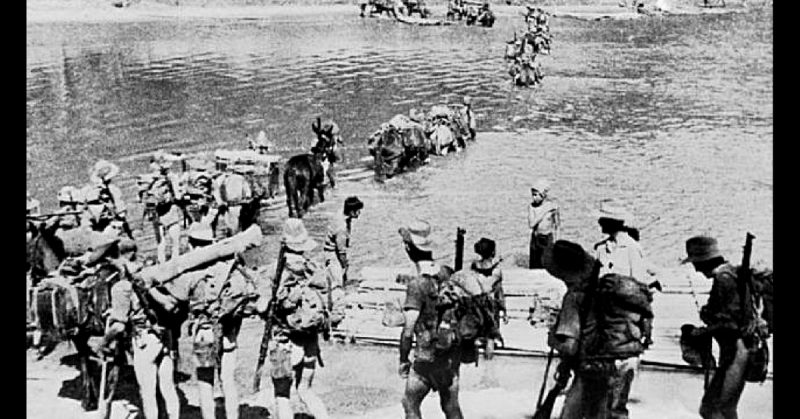Some soldiers are so pig-headedly persistent that they go down in legend; including one who did so with only one arm.
George Albert Cairns was born on December 12, 1913, in London, England. At the start of WWII, he was working peacefully in a bank, where he met his wife to be and they married in 1941. Then, as duty called, he joined the British Army as a lieutenant in The Somerset Light Infantry (Prince Albert’s).
Cairns’ unit was attached to the South Staffordshire Regiment in Burma to fight the Japanese. More specifically, he was part of the Chindit Battalion of the 77th Indian Infantry Brigade – a Special Forces Unit specializing in guerilla tactics led by Brigadier Orde Charles Wingate.
In February 1943, the Chindits launched Operation Longcloth. With Wingate in the lead, 3,000 Chindits entered Burma to sabotage Japanese communications, transport, and supply lines. It was a nightmare.
Not only did they face the Japanese and their Burmese sympathizers, but they also had to deal with malaria, dysentery, and other tropical diseases. As such, many men went about nude to save them the trouble of having to undress to do their… business.
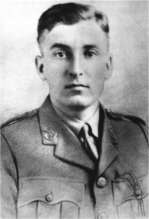
Wingate was no help. He was a wishy-washy sort who frequently changed his mind – often without bothering to inform the rest of his column commanders. The Chindits also had him to worry about.
Adding to their problems was the dense tree cover which made supply drops of weapons, equipment, food, and medicine to the troops a challenge. The forest also hindered reconnaissance, which explained why they were often surprised by Japanese forces.
By the end of March, Wingate ordered a retreat to British-India. Of the 2,182 who made it out, some 600 were too ill ever to return to active service. Not so Cairns.
He returned to Burma the following year. Operation Thursday was launched on March 5, 1944, with thousands of men entering the country on foot, along with 10,000 others who were airlifted into three separate landing sites.
They met with little resistance as most of the Japanese fighter planes had been destroyed by several raids on their airfields. They took off in a series of gliders towed by Dakotas, and Cairns was in the lead formation under Brigadier Michael Calvert – Commander of the 77th Brigade.
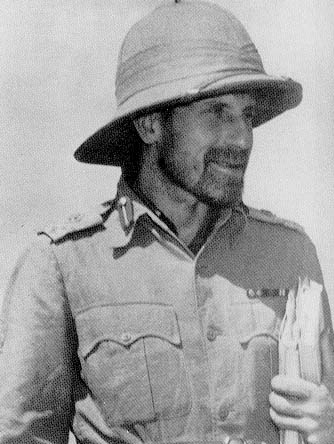
Fortunately, they were not the first to land. Poor aerial reconnaissance photographs failed to spot the ditches and two felled trees on the landing site, causing the first gliders to crash; killing 30 and wounding another 28.
Cairns’ group was tasked with securing the site and doing some manual work so the rest of the gliders could land. Having done so, they went deeper into Burmese territory to wreak havoc on Japanese communications, supply routes, and transport lines.
By March 12, Cairns’ men and a regiment of the Gurkha Rifles had blockaded the roads and rail systems at Henu and Mawlu. They dug themselves into the side of a hill with a pagoda on top, so they called it Pagoda Hill and settled in.
Despite their numbers and the tremendous noise they made, the Chindits had dug in on one side of Pagoda Hill while the Japanese were on the other side. What was even more amazing, was that none of the Japanese realized they had new, and extremely unwelcome, neighbors.
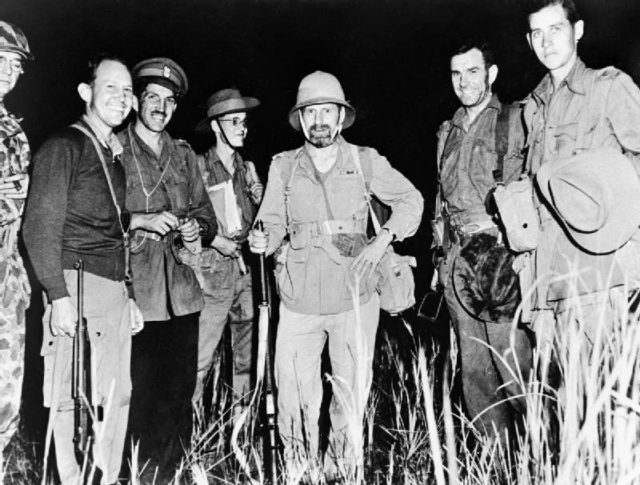
The following morning, a small group of Japanese soldiers made their way to the pagoda; whether to pay their respects or simply to admire it, will never be known. Whatever the case, they were spotted. The hilltop was the size of two tennis courts with the Chindits at one end and the Japanese at the other.
Calvert led the attack at 11 AM. With the pagoda dab smack in the center of the small field, it quickly filled up with British, Indians, Nepali Gurkhas, Africans, and sworn-wielding Japanese. With kukris (a small, short sword) used by the Gurkhas, guns, grenades, sticks, stones, and hand-to-hand combat; it must have been an incredible sight.
Calvert had just killed a few of the enemy when he turned and saw Cairns blowing off a Japanese officer’s head at point blank range. As the officer fell the Englishman bowed, but not to the dead officer. He had bent down to pick up the dead Jap’s sword which he then used to slash at several other attacking Japanese. Cairns’ movement looked odd. Then Calvert’s jaw dropped.
Cairns did not raise his left arm because the lower half hung on to the upper part with only a few strips of muscle. The Japanese officer’s last act had been to cut it off. Someone else had bayonetted Cairns twice in his side. Only adrenaline kept him going.
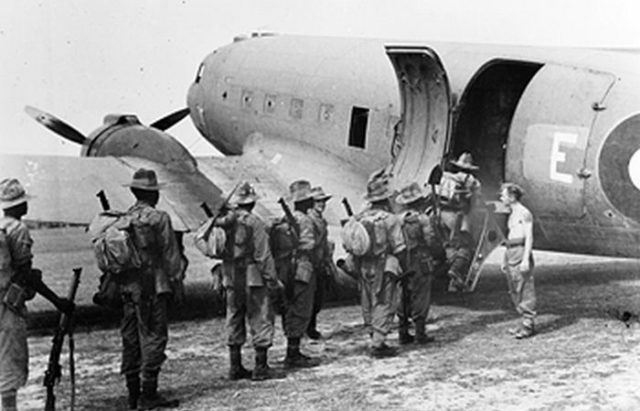
Fortunately, the Chindits outnumbered the Japanese who retreated to the other side of the pagoda. Seeing them run, Cairns finally collapsed. With no more men to deal with, Calvert ran to him.
“Have we won, sir?” the Lieutenant asked. “Was it all right? Did we do our stuff? Don’t worry about me.”
Calvert wrote in his biography that those were Cairns’ last words before passing out. The last of the Japanese were then dealt with. Cairns died the following day.
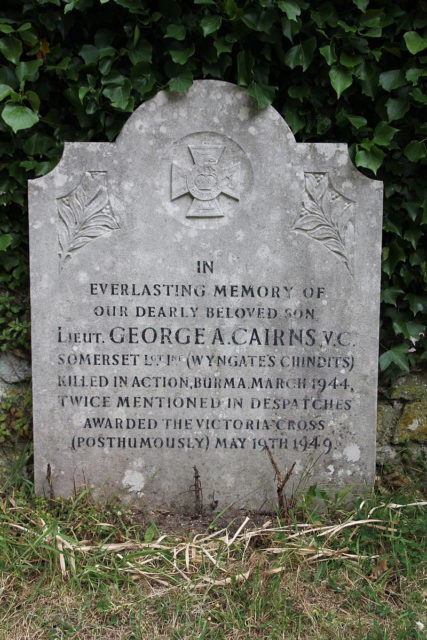
His incredible act earned him a Victoria Cross – Britain’s highest honor given to those for gallantry in the face of the enemy.
On March 24, Wingate (now a General) had finished inspecting several Chindit-held bases in Burma and was returning to India. On his plane was Cairns’ VC commendation, complete with the signed testimony of several witnesses. Tragically, as he flew over the jungles of Manipura, his plane crashed – killing him and everyone on board.
On May 19, 1949, Cairns’ widow finally received his VC.
